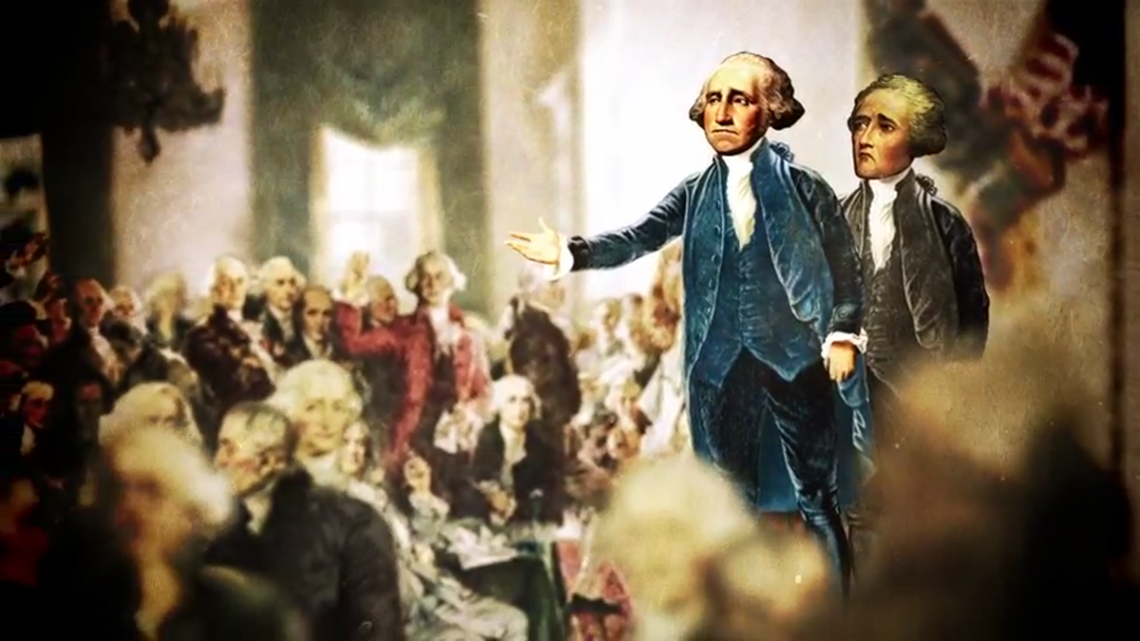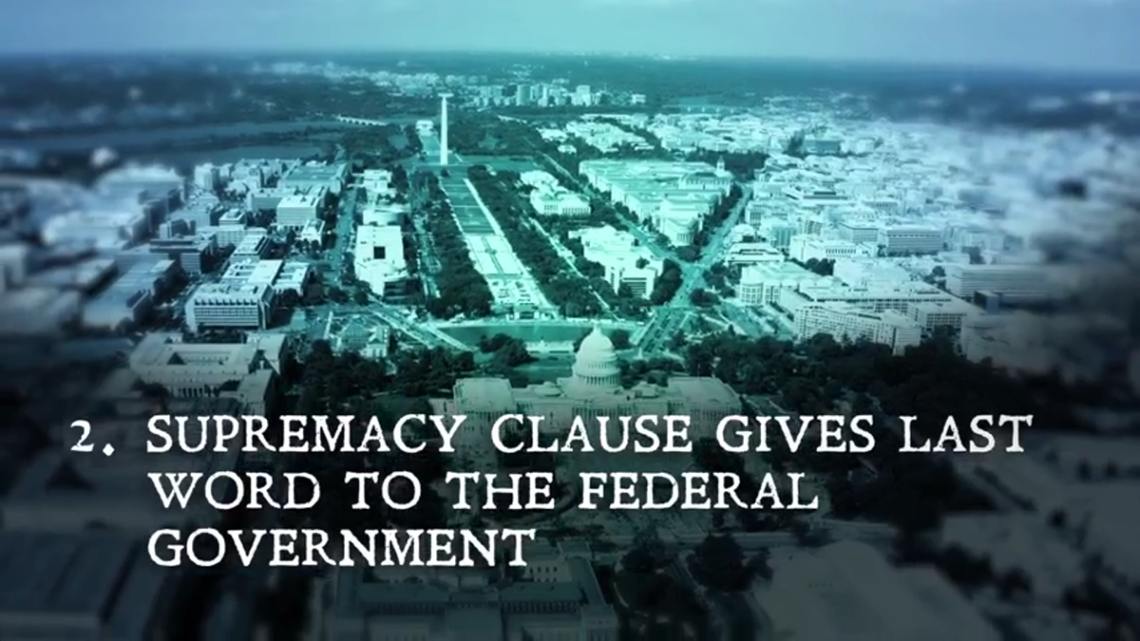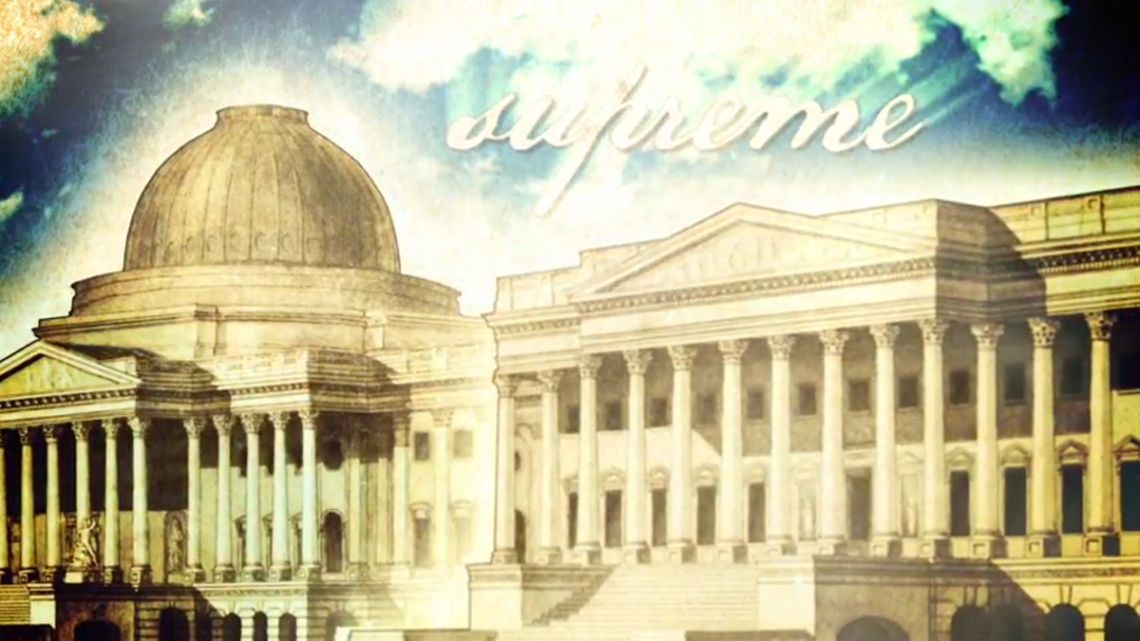Just in time for Constitution Day, Annenberg Classroom has released a video on the Supremacy Clause of the U.S. Constitution. The clause, in Article VI of the Constitution, states that the Constitution, federal laws, and treaties “shall be the supreme Law of the Land,” and represented an attempt to find a balance of power between the federal government and the states by giving the federal government the last word in conflicts between the two. The video, “The Supremacy Clause: McCulloch v. Maryland,” draws on interviews with legal scholars and historians to illuminate the history and impact of the Supremacy Clause.
As detailed in the video, the limited power initially granted to the federal government left Congress unable to raise money or order troop movements during the Revolutionary War. After the war, Alexander Hamilton and the Federalists pressed for a stronger national government at the Constitutional Convention in Philadelphia. Thomas Jefferson, James Madison, and the Anti-Federalists disagreed, and their argument for the states to retain power led to the Tenth Amendment, which asserts that all powers not given to the federal government by the Constitution are reserved for the states or the people.
After having let the first national bank’s charter expire and then running into funding issues during the War of 1812, President James Madison chartered the Second Bank of the United States. Many of the states were not happy with this and imposed taxes on its branches. In 1818, the head of the Baltimore Branch of the national bank, James McCulloch, refused to pay the tax, which led to the 1819 Supreme Court case McCulloch v. Maryland.
The question at hand: Whose law took precedence – that of the states or the federal government? The unanimous court decision by Chief Justice John Marshall in favor of McCulloch said that the federal government is allowed to create a bank and the states have no power to tax that bank, because federal law – thanks to the Supremacy Clause – is supreme. The decision was fundamental in cementing the strength of the federal government. The Supremacy Clause comes into play in more recent debates over where federal power ends and state power begins in a range of cases, including civil rights, voting laws, environmental protections, vehicle safety standards, and immigration enforcement.
The 24-minute video, released by Annenberg Classroom, is a project of the Annenberg Public Policy Center‘s Leonore Annenberg Institute for Civics, in partnership with the Annenberg Foundation Trust at Sunnylands. The video is close-captioned in English and Spanish and comes with a lesson plan. Annenberg Classroom provides resources for middle and high school students, and the site contains an extensive library of more than 60 videos, including conversations with Supreme Court justices, interactive games, a guide to the Constitution and other resources.
Constitution Day is celebrated on September 17. Annenberg Classroom is a partner in the Civics Renewal Network, which includes more than 30 nonprofit, nonpartisan organizations dedicated to enhancing civic literacy by providing teachers with free, high-quality resources. Learn more about their resources for Constitution Day and the Preamble Challenge here.
In addition to the videos and other resources available through Annenberg Classroom, anyone interested in learning more about constitutional law can take advantage of the free course “Introduction to Key Constitutional Concepts and Supreme Court Cases,” which is available on demand. The online course was developed by Kermit Roosevelt, a constitutional law scholar at the University of Pennsylvania, in partnership with the Annenberg Public Policy Center, and is offered free as part of the Penn Open Learning initiative, through the Coursera platform. Click here to enroll, get more information, and preview a lecture. Selected lectures are also available at Annenberg Classroom as classroom resources.






